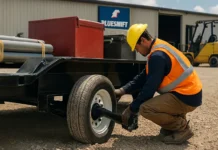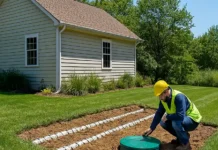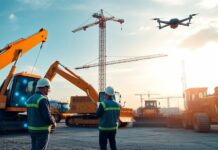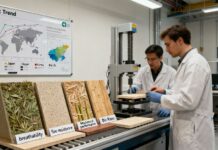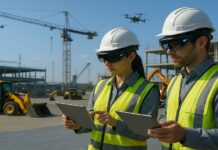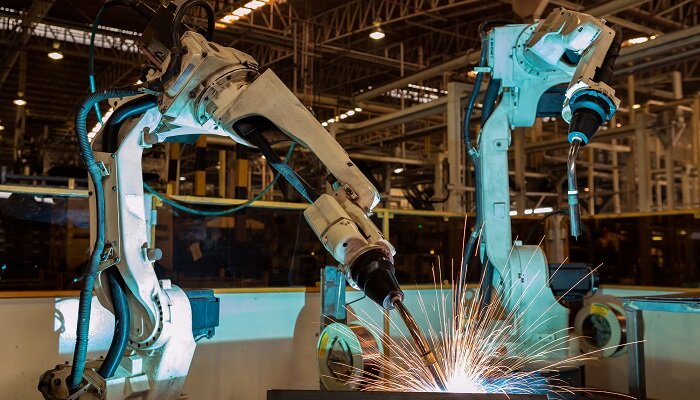It is well to be noted that in 2021, the construction business contributed $958.8 billion to the overall GDP of the United States, thereby making it one of the most prominent manufacturing industries across North America. Let us have a look into the status of automated processing systems as well as the execution of robotics within the construction sector.
A Brief Insight into Robotics in Construction
Within the construction sector, robotics happens to be recognized as an extraordinary innovation due to its ability to surge efficiency as well as occupational safety. A fast expanding body in terms of robotics in construction- RiC has gone on to generate recommendations when it comes to autonomous construction machinery. Due to the distinct features of construction process, like a tightly controlled operational setting as well as a reduced degree of standardization, the adoption of automation within the construction industry goes on to face many obstacles. The fact is that today, the RiC has gone on to evolve into a very highly interdisciplinary scientific discipline that blends robotics with many pressing technologies like additive manufacturing, building information modelling- BIM as well as machine learning.
How Robotics happens to be Revolutionizing On-Site Construction Tasks
Researchers have gone ahead and thoroughly described the usage of robotics within the construction industry by way of their research paper, which was published in Automation in Construction. Many researchers are looking forward to replacing hazardous as well as monotonous on-site tasks like laying bricks, examination, as well as cleansing by way of robotic technologies.
Tracking the structural integrity of facilities like bridges happens to be an essential duty, but it is also challenging and time-consuming for employees. Recent years have seen widespread adoption as far as robotics are concerned with regards to structural inspection. Recently developed robotic technologies go on to include a specialized unmanned vehicle as well as two underwater robots when it comes to investigating rollover pass bridges.
Making the maximum use of robotics in terms of cleansing of high-rise buildings has been witnessed as a method so as to raise the safety of the operation process. Apparently, a transportable automated robot is needed when it comes to cleansing windows with high-rise structures, as well as a wall-cleaning machine with dry and semi-dry wall-cleaning devices already manufactured.
These studies go on to demonstrate that robotic technologies have indeed matured to the point where they can indeed be made use of in construction tasks on-site.
Human Robotic as well as Multi-Robotic Collaboration
Human-robotic collaboration-HRC systems happen to be viewed as a method when it comes to reducing or preventing harm to human beings by way of enabling individuals to perform duties that too remotely off-site while at the same time also commanding robots on-site.
In 2017, an intelligent observation system that enabled employees to remotely manage a teleoperated excavator was developed. As per the results coming from the field-testing experiment, the suggested approach went on to reduce the operational time for digging by 12.5% and, in the case of leveling, by 14%, while at the same time enhancing usefulness as well as ergonomics by 21%.
Numerous sophisticated construction repairs as well as inspection duties necessitate collaboration when it comes to robots having diverse qualities. A system of numerous robots for tunnel inspection has been created. Four robots, specifically an investigation robot, a transfer robot, as well as two relay robots, go on to make up the system. Transmission features happen to be pretty essential for multi-robot systems in order to conduct successful ecological surveillance as well as exploratory duties. In the case of certain multi-robot systems, researchers have gone on to design the data maps so as to maximize the measurement approach within various robots.
Automated Construction Specification Review Process
Reviewing construction specifications happens to be essential to the success when it comes to a construction project. A construction specification goes on to detail every construction prerequisite that the contractor has to meet for the project. Though the construction specification happens to be drafted primarily based on the national guidelines, numerous provisions contain errors, like standards that are not suitable for site conditions. It is therefore pretty vital to rectify mistakes when it comes to the construction specification.
It is well to be noted that an article published in Advanced Engineering Informatics remarks that professionals go on to desire an automated method so as to facilitate review of construction specifications. This research happens to address the issue of syntactic inconsistencies occurring between documents, which in turn affects the automated evaluation in terms of construction specifications in the field. The idea of this study was to come up with an automated system as far as evaluating construction specifications that have adequate industrial utility is concerned by way of examining varied semantic characteristics through NLP.
It is worth noting that the NER model happened to be devised so as to enable the computer to understand the text in spite of sentence structure. NER happens to be a text-mining method that goes on to identify relevant keywords in the text. The authors went on to create a provision-pairing model so as to help the computer gauge the text in spite of how provisions happen to be organized. Finally, the UI as well as the UX of the web-based prototype were designed for industry practitioners’ convenience.
The fact is that the new model resulted in a 22.3% decrease in time from the remaining existing models, whereas an improvement in precision of around 24.2% was seen. This automated model can be applied to other industries as well, with a few system alterations, and is indeed a game changer as far as the construction industry is concerned.
Automated Additive Construction
Extrusion-based as well as powder-based techniques have gone on to be identified as the most viable procedures when it comes to facilitating the usage of AM methods in large-scale construction, like the construction of walls, structures, and bridges under digital computer control. Because of the automated element when it comes to the AM procedure, the AM incorporation in construction not only results in fewer mistakes, thereby reducing waste materials, but also a dip in pertinent costs, which at the same time permits the development in terms of sustainable structures with functional materials.
Future Directions – Automated Additive Construction
According to one of the recently published articles, several important tasks have to be performed so as to have quick exposure to automated construction methodologies, specifically automated AM techniques.
In addition to improvements to hardware engineering as well as manufacturing processes when it comes to automated construction, it is necessary to develop standardized control software as well as conventions for the exact and effective manufacturing of large-scale structures with adequate durability by way of a solitary or multi-robotic solution.
Due to its extensive utilization, establishment when it comes to theoretical and algorithmic structure in terms of energy-efficient collision-free process planning of multi-robot autonomous additive construction channels such as optimal part differentiation, allocation of mission, organizing, trajectory estimation, as well as repositioning, has gone on to become quite a necessity.
How will digital modifications go on to affect the construction sector workforce?
An article published in the International Journal of Construction Management stresses the implications when it comes to the adaptation of industry 4.0 technologies like robotics as well as automated operations for the construction industry.
The automation as well as digitalization of the construction industry, by way of the incorporation of digital fabrication- dfab methods as well as novel technologies, goes on to offer probability in terms of resolving long-standing challenges. It is most likely to disrupt employment, although the precise effects on the labor force are yet to be known. It goes on to affect the preparation along with implementation stages, especially. Consequently, it is also anticipated that the present construction roles will go on to evolve and new roles are going to be created. At the end of the day, current fragmented projects are going to be replaced by way of project-based integrations, which will be enabled via digitalization.
The fact is that robotics as well as automation will go ahead and offer numerous benefits to the construction sector along with its workers in time to come.



